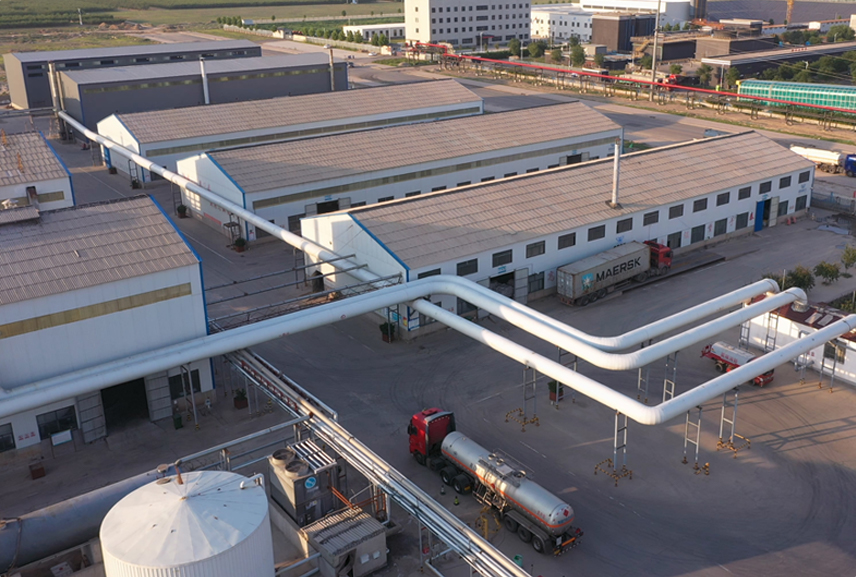HPMC plays multiple roles in paints and coatings, including thickening, stabilization, adhesion enhancement, film performance improvement, rheological properties adjustment and cost reduction.
HPMC, or hydroxypropyl methylcellulose, is a polymer compound with a wide range of industrial applications, especially in the fields of construction, coatings, textiles, papermaking, etc. In the coatings industry, the role of HPMC is particularly significant: Thickening and stabilization: HPMC can increase the viscosity and consistency of the coating, thereby improving the stability of the coating and preventing the coating from stratification or precipitation during storage. Adhesion improvement: HPMC can improve the adhesion of the coating, allowing the coating to better adhere to the substrate and enhance the firmness and durability of the coating. Improving film properties: By increasing the viscosity and consistency of the coating, HPMC helps to improve the smoothness and uniformity of the coating, thereby improving the overall quality of the coating. Adjusting rheological properties: HPMC can adjust the rheological properties of the coating, allowing the coating to have better fluidity and construction performance during construction. Reducing costs: HPMC also has a high cost-effectiveness, which helps to reduce the overall cost of coatings, making the coatings economical while maintaining excellent performance.
In summary, the application of HPMC in paints and coatings not only improves the quality and performance of the products, but also provides more possibilities for the development of the coatings industry.
| Item | Unit | Standard Specifications |
| Appearance | / | White powder,free flowing |
| Loss on drying | % | 4-6 |
| Residue | % | 3.5 |
| Methyl | % | 49-26 |
| Hydroxypropyl | % | 7-14 |
| Ph value(25C) | / | 6-8.5(neutral) |
| Gel temperature | ℃ | 60 degree/75 degree |
| degree of fineness | mesh | 100 mesh,>96%80 mesh,>100% |
| Apparent density | g/m3 | 0.4-0.6 |
| proportion | g/L | 420-520 |
| Surface Tension(2%solution) | dyn/cm | 42-56 |
| Water retention | % | ≥92 |
| Light Transmittance | % | 65-90 |
| Carbonization temperature | ℃ | 280-300 |
| Discoloration temperature | ℃ | 190-200 |
Related Products
HPMC (Hydroxypropyl Methyl Cellulose)
Better water retention and open time
Better strength development of the mortar
Improved workability
Increased adhesion to a variety of substrates
MHEC (Hydroxyethyl methyl cellulose)
High thickening efficiency and wide range of viscosity grades
Good compatibility
Excellent stability
Good protective colloid activity
RDP (Re-Dispersible Polymer Powder)
High flexibility, good film formation
High water resistance for increased open time
High hydrophobicity, ability to bridge cracks
Viscous texture and high workability
Related Application Categories
Bonding mortar is made of cement, quartz sand, polymer binder and various additives through mechanical mixing.
Plastering mortar is used for plastering on surfaces such as walls, floors, roofs and beam-column structures to meet the requirements of protection and decoration.
HPMC cellulose ether enhances mortar and board caulking agent by improving anti-cracking shrinkage and strength, minimizing the risk of cracks, and extending working time. With superior water retention properties, it prevents issues like fast drying and poor hardening, ensuring optimal hydration.
Daily Chemical Detergent Grade HPMC Cellulose
Daily chemical Detergent grade hydroxypropyl methyl cellulose (HPMC) is a synthetic high molecular polymer prepared by chemical modification with natural cellulose as raw material.
The most notable property of HPMC is its effect on the performance of hand sanitizers.
Building materials added with HPMC are easier to mix and use, improve the work efficiency of construction workers, extend the open time, improve the bonding strength, and form a smooth and delicate surface coating.
FAQ
Regarding the relationship between viscosity and temperature in HPMC (HPMC viscosity), what should be noted in practical applications?
What are the differences between HPMC and MC?
What are the formulations for interior and exterior wall putty powder?
What is the application of HPMC in putty powder, and what causes the formation of bubbles in putty powder?


Get in Touch
Interested in how our HPMC can enhance your personal care formulations? Contact us to request a free sample and experience the superior quality of our cellulose ether products.
Related News and Blogs
24
Aug., 2024
Let's meet Indonesia Coatings Exhibition 2024
The 10th Paintistanbul & Turkcoat Fair will be held at the Istanbul Exhibition Center in Turkey from May 8th...
19
Nov., 2021
What Causes A Cracked Putty Layer?
The one-off scraping thickness of the putty is directly proportional to the curing shrinkage strength, which increases in proportion to the tendency of the putty to crack.
04
Nov., 2021
Whether you are carrying out small repairs or building walls, knowing how to mix the mortar needs to be precise. If the mortar is too dry, the blocks will not stick together properly. If it is too wet, flowing mortar can spill out of the joints, resulting in wasted time and materials for clean-up.
25
Oct., 2021
The Effect of Winter Construction Temperature on Tile Adhesives
As we all know, tile adhesive is generally made from cement and mixed with various additives. It is mixed with water at the construction site and then applied to the wall or floor.

Get in Touch
Interested in how our HPMC can enhance your personal care formulations? Contact us to request a free sample and experience the superior quality of our cellulose ether products.